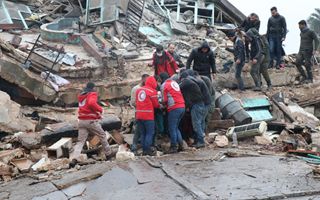(Finance) – Il earthquake devastating of Türkiye And Syriaviolent storms and frequent floods in residential areas, along with many others catastrophes naturallast year in the world they caused damage for 280 billion dollarsof which 108 were insured (while the average for the decade was, respectively, 223 and 99) and a total of 76 thousand victims. The data comes from a report by Swiss Re which confirms that, since 1994, these phenomena have been increasing at a rate of between 5% and 7% every year, with more and more negative records. Indeed, according to the Swiss reinsurer the amount of insured losses could double in 10 years due to the increase in temperatures and the greater frequency and intensity of extreme weather events.
According to reinsurer Swiss the losses due to natural disasters are growing at a faster rate than economic development. In fact, from 1994 to 2023, insured damages from natural catastrophes, measured by inflation, recorded a +5.9% per year while global GDP recorded +2.7%. In other words, over the last 30 years, economic losses from natural disasters as a proportion of GDP have doubled.
“Even without the exceptional Hurricane Ian that hit Florida, 2023 reconfirms the trend of increasing losses, due to more and more assets in vulnerable regions, therefore urbanization,” he says Jerome Haegeli, Chief Economist at Swiss Re. “We must also consider the intensification of climate-related risks. More severe storms and larger floods, fueled by global warming, are set to contribute more to the losses. This shows how urgent it is to intervene, especially if we take into account the structurally high inflation, which has increased post-disaster costs”
“As weather risks increase due to climate change, risk assessments and insurance premiums must adapt – he says Moses Ojeisekhoba, Swiss Re’s CEO Global Clients & Solutions – and going forward we must focus on how to reduce losses, in a joint effort between the private sector, the public sector and society at large. We are faced with a world where atmospheric phenomena are increasingly intense and we absolutely must adapt.”
However, 2023 was also characterized by high frequency of events, with 142 insured natural disasters. This is a new record. The majority of these phenomena (at least 30) can be classified as “medium entity”; that is, with losses between $1 and $5 billion. The single most devastating natural catastrophe of the year was the earthquake in Turkey and Syria in February, with estimated insured losses of $6.2 billion.
The frequency of convective storms (SCS – severe convective storms) has increased by 7.5% per year since 1994, therefore at a double rate compared to other phenomena. The term SCS indicates a series of phenomenaincluding tornadoes, hail, and other events that develop when warm, moist air rises from the surface to the upper layers, leading to training Of clouds towering, lightning and thunder. Meanwhile, packets of cold air plummet towards the Earth’s surface, bringing powerful gusts of wind, rain or even hail. The losses Global insured claims due to SCS reached a new record of $64 billion in 2023, 85% of which were in the United States. SCS-related insured losses have grown fastest in Europe, exceeding $5 billion in each of the last three years. In particular, the risk of hail is increasing, especially in Germany, Italy and France.
